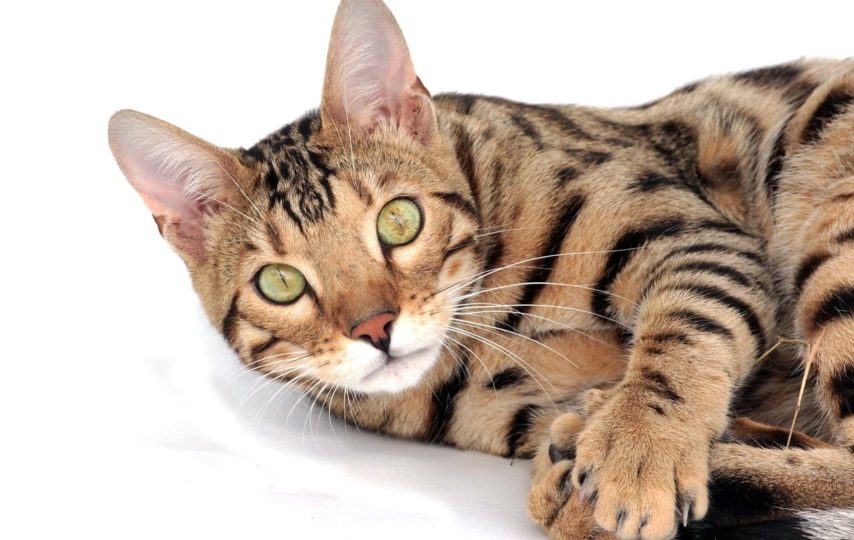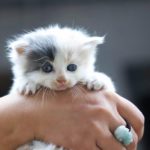Us humans, as well as our four-legged friends, are easily affected by different elements in and around our environment that can make us all easily ill. Cats have the propensity of suffering from very similar health conditions as us, however, their symptoms and tolerance levels may not be the same. A few of these elements include climate change, pollution, heredity, wrong foods, not enough activity and exercise, stress and anxiety, to mention a few.
Some of the conditions they get affected by are very common in specific breeds as opposed to others and any pet owner would be better off having a sense of know-how about their furry friends’ possible ailments, not just to be ahead of the game, but also to distinguishthe symptoms in their pets and what to do about it.
The article below will discuss 5 breeds of cats that have common health problems and how to tell from their symptoms.
The British Shorthair
This fairly large and popular cat breed is characterized by short hair, round features and come in a variety of patterns and colours, click here to see what they look like.Due to its low maintenance, many people like to have them as pets. They do not demand much attention and are a quiet type of feline that goes about its business, without being phased by any people around it.
The majority of them have good health but you will find a few that suffer from illnesses such as Autosomal dominant polycystic kidney disease or AD-PKD, which is an inherited kidney disease, also common inPersian cats.
Initially, the only way to tell what it was, was by doing an ultrasound scan of the kidneys, however, nowadays there are precise gene-tests available through majority veterinarian practices.
Symptoms of this condition include nausea, vomiting, traces of blood in the urine, high blood pressure, increased thirst and urination and a decrease of appetite leading to weight loss, which could also lean towards a sense of lethargy. According to sources, there is no known cure for this condition, however, it can be managed using anti-inflammatories and anti-biotics coupled with an extensive dietary plan, and monitoring thereof.
The Siamese
These “Royal cats of Siam” can be spotted from a mile, they have very distinct features very different from most cats and their long, athletic bodies with large pricked up ears and short tails are a giveaway to their breed, they almost always have a darker face, paws and tail than the rest of their body and their eyes are always blue, no matter what colour coats they have. These types do demand a lot of attention in comparison to most others.
If you are looking for a lifelong companion, these felines have been known to live for up to their twenties. They suffer from mainly two types of conditions namely renal failures and skin disorders. They can also be affected by other things such as Asthma, Hip dysplasia and Mediastinal lymphoma, and information of three different kinds of Lymphoma can be found here:https://www.vet.cornell.edu/departments-centers-and-institutes/cornell-feline-health-center/health-information/feline-health-topics/lymphoma
The Lymphoma is a cancer of the lymphocytes which travel through the body into the vessels and blood, almost like a viral infection. Cats that are affected by this develop weight loss, diarrhoea and vomiting. Some will have an increase in appetite as well. Because it affects the respiratory regions it also causes breathing difficulties.
Baseline screening bloodwork may be performed by the vet, to find the cancerous cells which are treated via chemotherapy and an oral chemotherapy agent called Chlorambucil and a steroid called Prednisone. Cats can tolerate this form of therapy a lot better than humans can. They do not lose their hair but they can get vomiting, appetite decrease and diarrhoea on occasion.
The Bengal
A fairly new breed of feline crossed between a domestic cat and an Asian Leopard Cat in the hopes of creating an exotic wild cat that could be domesticated. Because of this combination, it has a marble-like coat that’s short and thick, almost a luxurious type of fur that feels like a Persian carpet.
These friendly and playful companions are a favourite amongst many. They make lots of noise and get easily bored, so seek constant activity and things to keep them occupied. Their common ailments range from mainly digestive disorders to tumours’ or growths. They can also be prone to other uncommon issues such as Kidney disease, Cystitis, Infections and Glaucoma or Cataracts.
Universal symptoms of the digestive disorders range from constipation, diarrhoea and struggle to eat, painful abdomens, bad breath and weight loss. This can be managed by the vet, giving it some anti-biotics and a strict healthy high-fibre diet.
If you spot any of the above symptoms, it is advisable to visit the veterinarian immediately.













